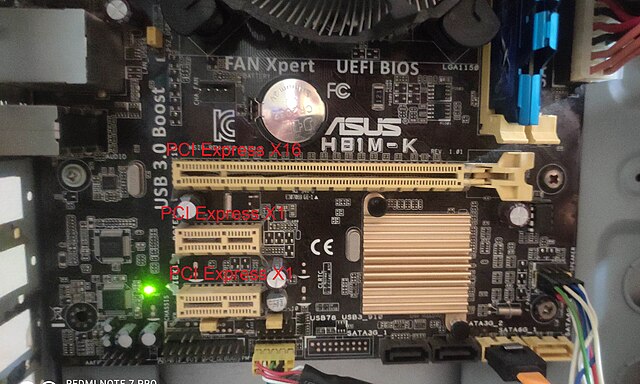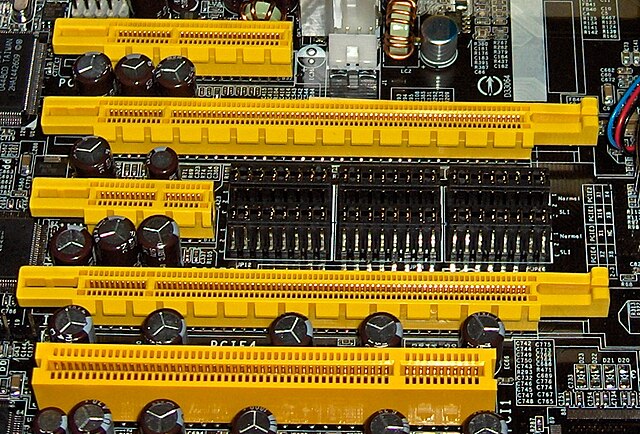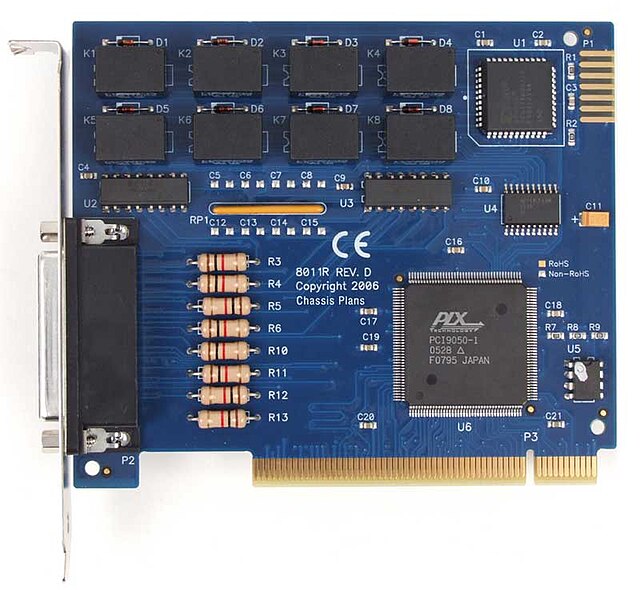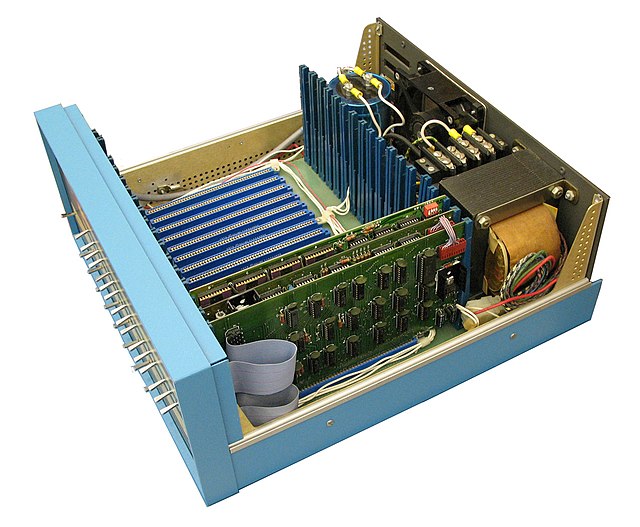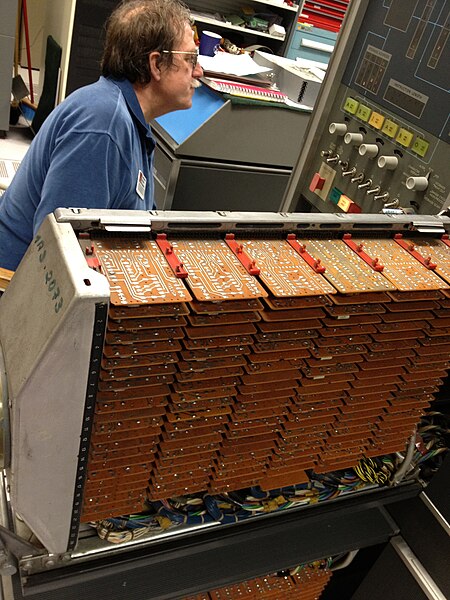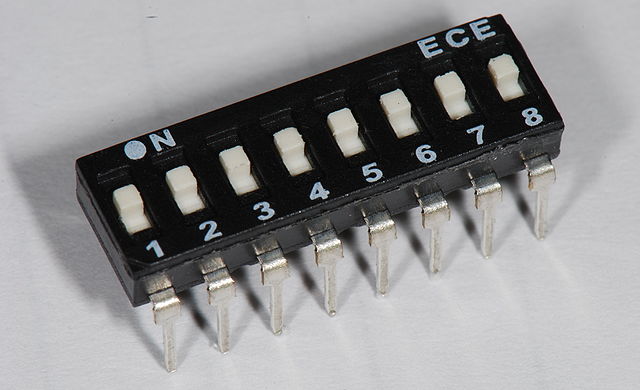PCI Express, officially abbreviated as PCIe or PCI-e, is a high-speed serial computer expansion bus standard, designed to replace the older PCI, PCI-X and AGP bus standards. It is the common motherboard interface for personal computers' graphics cards, sound cards, hard disk drive host adapters, SSDs, Wi-Fi and Ethernet hardware connections. PCIe has numerous improvements over the older standards, including higher maximum system bus throughput, lower I/O pin count and smaller physical footprint, better performance scaling for bus devices, a more detailed error detection and reporting mechanism, and native hot-swap functionality. More recent revisions of the PCIe standard provide hardware support for I/O virtualization.
Two types of PCIe slot on an Asus H81M-K motherboard
Various slots on a computer motherboard, from top to bottom: PCI Express x4 PCI Express x16 PCI Express x1 PCI Express x16 Conventional PCI (32-bit, 5 V)
PCI Express x1 card containing a PCI Express switch (covered by a small heat sink), which creates multiple endpoints out of one endpoint and lets multiple devices share it
The PCIe slots on a motherboard are often labeled with the number of PCIe lanes they have. Sometimes what may seem like a large slot may only have a few lanes. For instance, a x16 slot with only 4 PCIe lanes (bottom slot) is quite common.
In computing, an expansion card is a printed circuit board that can be inserted into an electrical connector, or expansion slot on a computer's motherboard to add functionality to a computer system. Sometimes the design of the computer's case and motherboard involves placing most of these slots onto a separate, removable card. Typically such cards are referred to as a riser card in part because they project upward from the board and allow expansion cards to be placed above and parallel to the motherboard.
Example of a PCI digital I/O expansion card using a large square chip from PLX Technology to handle the PCI bus interface
Altair 8800b from March 1976 with an 18-slot S-100 backplane which housed both the Intel 8080 mainboard and many expansion boards
Rack of IBM Standard Modular System expansion cards in an IBM 1401 computer using a 16-pin gold plated edge connector first introduced in 1959
Configuration DIP switches in a 16-pin through-hole package as often found in ISA expansion cards from the 1980s

